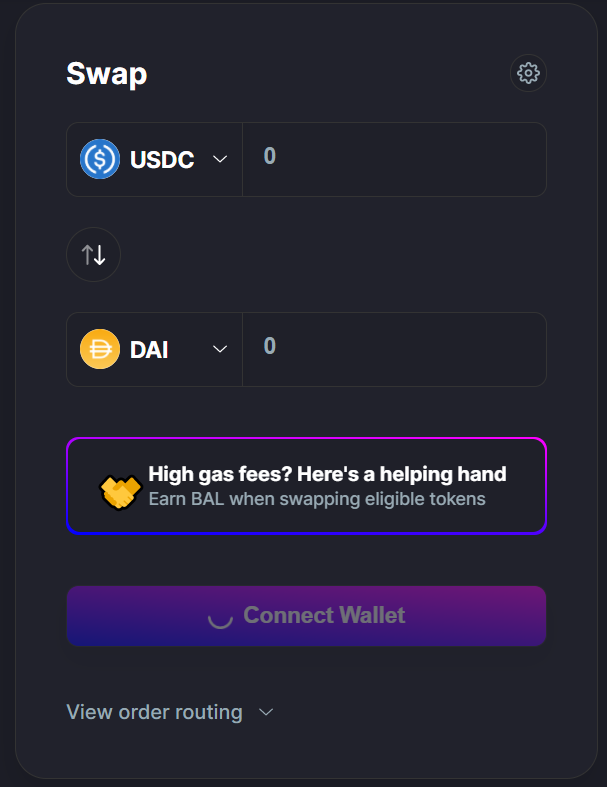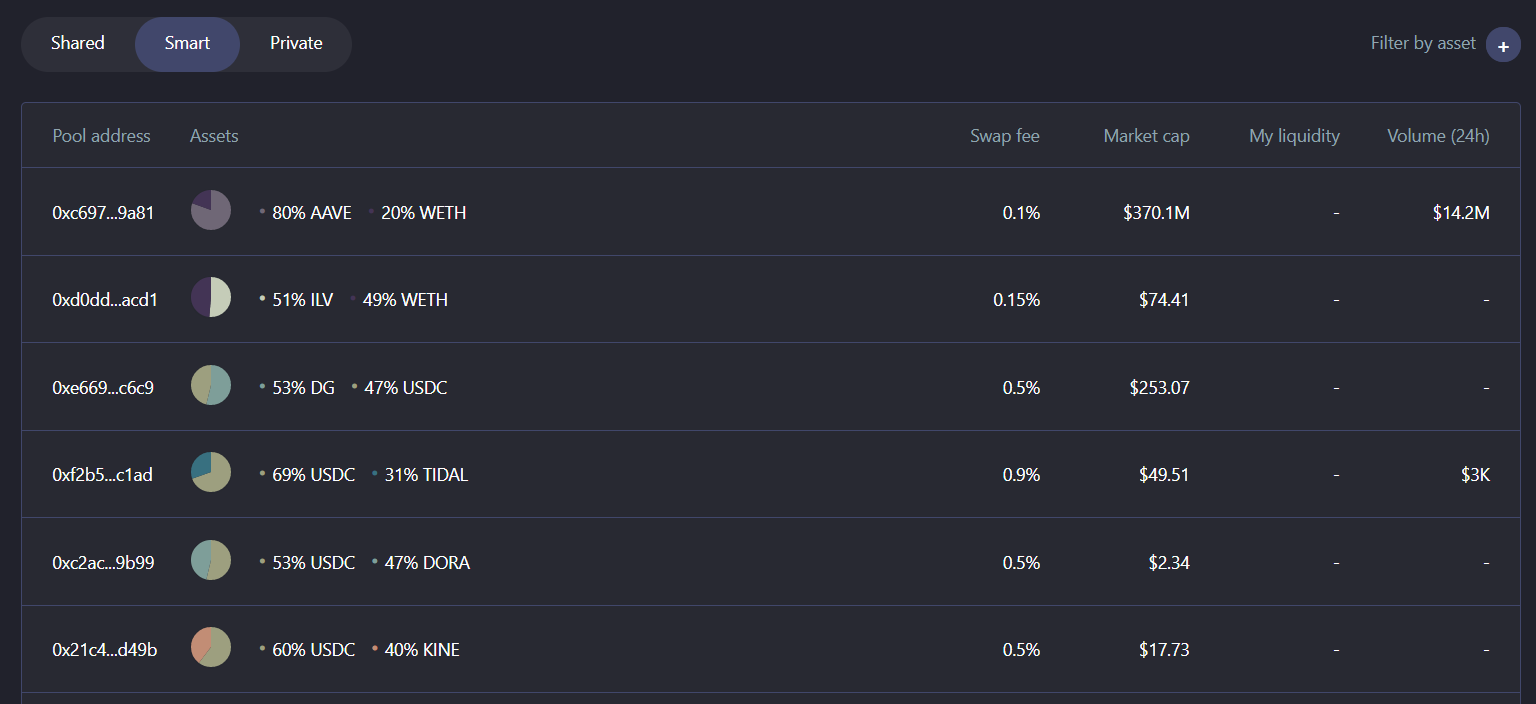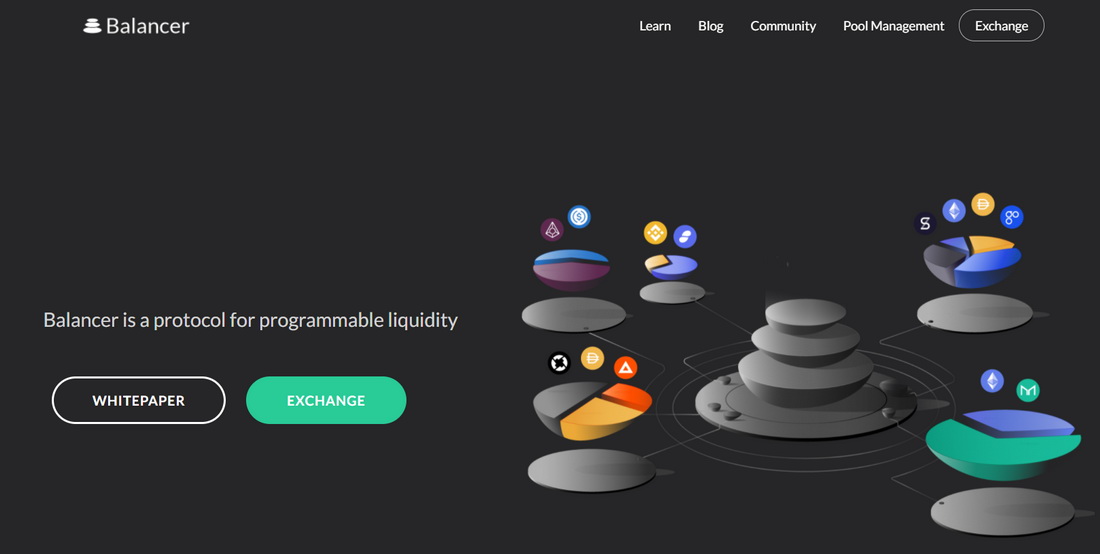 |
Balancer ReviewExchange
Withdrawal fee: 0.00 Taker fee: 0.00% Maker fee: 0.00% |
Balancer is an automated market maker (AMM) protocol that provides a cheaper way to trade cryptocurrencies with reduced slippage. It serves as a permissionless DeFi portfolio manager, automatically finding the best rates and prices and allowing users to earn rewards in the form of trading fees. Additionally, it provides a self-balancing weighted portfolio and price sensor to automate the entire process – this changes the concept of the traditional index fund.
Officially launched in September 2019, it was created by Mike McDonald and Fernando Martinelli [linkedIn] (Co-founder and CTOs).
Running on Ethereum, the protocol is currently in V1, with V2 coming soon with some major upgrades and improvements. The project has continued to grow since its inception, and is on the path to becoming a leading solution for crypto portfolio managers and users across the globe.
Balancer Fees
Trading Fees
On V1, Balancer doesn’t currently charge any trading fees. It’s important to note that there is a placeholder for an “EXIT_FEE” in the code, however it is set to 0.
However, for the upcoming V2 upgrade, Balancer will have swap fees (a percentage of the pool swap fee) and flash loan fees.
Withdrawal fees
For V2, the protocol will charge a withdrawal fee when users send tokens to an external wallet. If the assets remain internal on Balancer, no withdrawal fee is incurred to the user.
Trading View
There are two different trading views that users can utilize – swapping tokens and depositing tokens into pools.
Swap
The interface for swapping is extremely easy and simple. It’s comparable to the likes to Uniswap, SushiSwap, and other major DEXes around today. Simply connect your wallet, select the two tokens you want to swap, and initiate the trade.

Balancer Pools
The pools are smart contracts that maintain their value by consisting of two or more ERC20 tokens. Every token has its own weight and can be traded with other tokens within the same pool.
Pools are continuously being refreshed and rebalanced in order to keep the value of each token equal proportional to the value of the entire pool. Pool owners receive fees from trades that occur within the pool.
Each pool must have at least two tokens, the swap fee must range between 0.0001% and 10%, and consist of ERC20 tokens only.
An example of some of the pools that you can provide liquidity to are below:

Supported Countries and Cryptos
As Balancer is decentralized, anyone across the world can access the protocol, as long as they are able to download an Ethereum wallet (i.e. MetaMask). Additionally, it is completely permissionless, so traders cannot be whitelisted or censored.
Balancer currently supports 70+ different cryptos, all ERC20 tokens. These token offerings range from your major large/mid-cap coins to wrapped tokens and popular stablecoins. So, there’s plenty of variety to choose from.
Deposit and Withdrawal Methods
In order to deposit assets onto the Balancer protocol, you will need an Ethereum web wallet. For either swapping or providing liquidity, you will need to pay a gas fee to give your wallet permission to interact with the protocol to allow depositing of your chosen token.
Withdrawing is easy, and again can only be done through your Ethereum web wallet. If your tokens are locked in a pool, you will need to remove them from the pool first before you’re able to withdraw them.
BAL Governance Token
BAL is the native governance token for the protocol, which has a variety of use cases. BAL owners are eventually poised to have the right to vote on the weekly rate of token distribution, protocol fees, and perhaps launching Balancer on different blockchains.
By providing liquidity to specific pools, users can earn rewards in the form of BAL. The BAL supply will be capped at 100 million tokens in total – while this total cap has not yet been reached, this is the maximum it can attain.
Liquidity Mining
As previously mentioned, users can provide liquidity in order to earn BAL tokens as rewards. When liquidity is provided, users receive an amount of BAL tokens that is proportional to the amount they’ve deposited in the pool in relation to the protocol’s total liquidity.
Any tokens that are whitelisted by the community are available in pools and allow for earning rewards in BAL.
You also have the ability to create your own pool, allowing for further customization.
Smart Contracts
Balancer functions and runs using smart contracts, which allows for the protocol to run in a permissionless nature. Below are a few of the features that the smart contacts bring to the table:
Exchange Proxy
This is a contract that includes swap forwarding proxy logic and on-chain smart order routing functionality.
It’s composed of a few main functions:
- batchSwapL: lets users to batch execute swaps recommended by off-chain SOR
- viewSplit: queries the On Chain Registry to use on-chain data to provide the most optimal swap information
- smartSwap: merges the previous two functionalities to provide optimised on-chain swaps
Smart Route Order (SOR)
This is an off-chain linear optimization of routing orders between the various pools to attain the best price when completing a transaction. Whenever an order is placed, it calculates on the backend and provides a summary of the different pools/amounts that are most optimal for the trade.
Essentially, it’s a mechanism that helps collect liquidity amongst all of the pools. In the future, updated versions of Balancer are aiming to execute these contracts on-chain instead.
Smart Pools
Balancer’s smart pools are a great feature that – they are pools driven by smart contracts that can fully emulate a finalized pool, while also allowing complex logic to readjust balances, weights, and fees.
There are several use cases for them, and each smart pool is listed below:
- Liquidity Bootstrapping: Used for launching tokens that don’t require a substantial amount of funding – a two-token pool is created with the project’s token and another token used as collateral
- Swing Trading Pool: Helps mitigate the effects of impermanent loss and the volatility, acting as an index fund that rebalances in moments of volatile markets
- Smart Treasury: The treasury is a Balancer Pool that serves as a buyback mechanism and guarantees liquidity in the protocol
- Perpetual Synthetic Pool: Focuses on synthetic tokens, such as 2-token pool with a synthetic and collateral coin
- Investor’s Club: This smart pool can keep liquidity providers confined to a certain group (i.e. accredited investors or KYC-verified addresses)
- Experimental: Allows for users to deploy contracts of their choice, in addition to setting caps on certain pools if desired

API
Balancer’s API is extremely advanced and offers users a variety of ways to track and view data in real-time and execute orders. At the time of this writing, the API has been migrated to a new version 1.0. Some of the upgraded features include support for multihop swaps, a more efficient wrapper interface, and faster transaction processing.
How to use Balancer Exchange
As Balancer is built on Ethereum and is completely permissionless/decentralized, anyone can utilize the protocol. Of course, you will need an Ethereum-compatible wallet (with enough ETH loaded on it) to deposit tokens, approve transactions, etc.
Using the exchange is extremely easy – once you’ve reached the homepage, just click on Exchange and you’ll be directly natigated to the main protocol interface. You also have the option to read the whitepaper and/or scroll down the homepage to see all of the cool features offered!

Security
Balancer is one of the most secure AMMs out there, having completed full audits by Consensys Diligence, Trail of Bits, and Open Zeppelin. There are also links to the details regarding each audit on its website, which demonstrates excellent transparency.
It will also run a continuous bug bounty program when the bronze version of Balancer core is released. This bounty program will pay out rewards depending on the severity of the susceptibility/attack.
Although the security of the protocol is quite strong, it hasn’t been immune to hackers. In June 2020, an experienced crypto hacker was able to successfully trick it into releasing around $500,000 in token value. User funds were not returned, leaving some concerns surrounding Balancer’s safety.
Since then, they’ve taken some proactive measures to boost security on the protocol.
Conclusion
Balancer is a seriously impressive project, serving as a true representation of decentralization and taking the concept of index funds to a whole new level.
So is Balancer the right choice for you? After covering all of the key details surrounding this protocol, below are the advantages and disadvantages of using it:
Pros
- Fully permissionless and decentralized
- Large selection of ERC-20 tokens to choose from
- Smart contracts allow for increased trust and safety in terms of risk management and adjusting/rebalancing portfolios
- Secure platform with multiple confirmed/successful audits
Cons
- Although security is high, there could be vulnerabilities in the system that may potentially be exposed
- Gas fees are very high on the Ethereum network (although this applies to all Ethereum-based protocols/AMMs)
- Limited to ERC-20 tokens only










